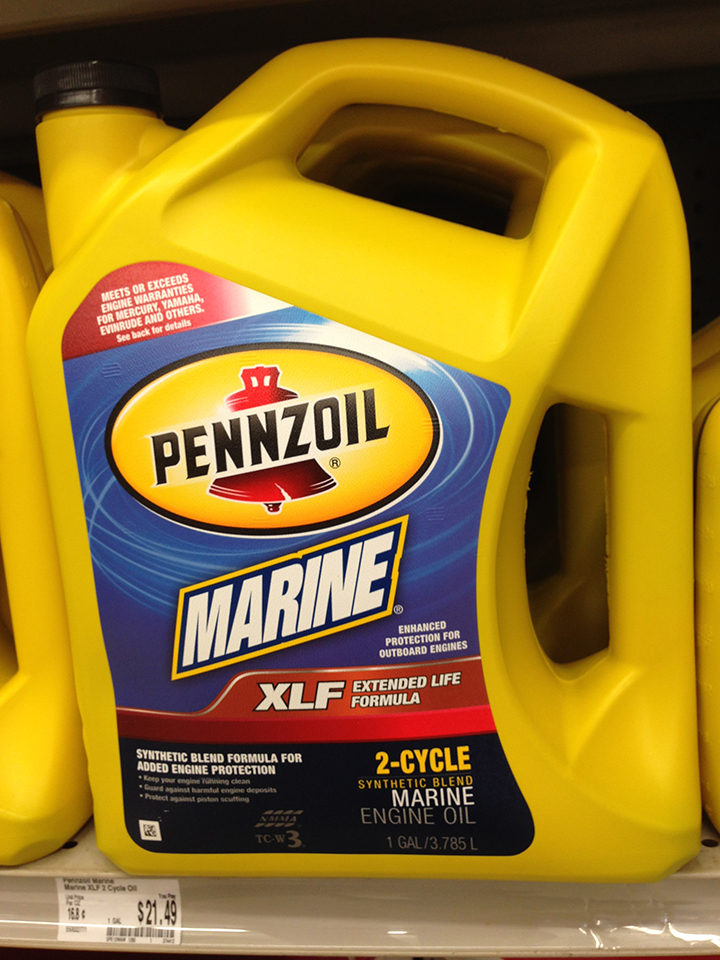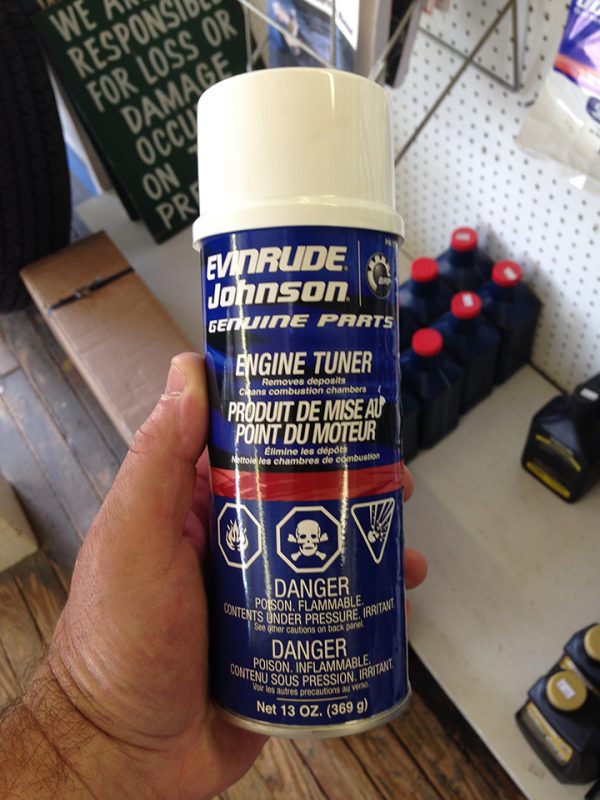by John Tiger, July 2017
The array of engine and drive lubricants, oils, sprays, and fuel treatments at your local marine parts store or dealer can be intimidating. Here’s a primer on what to use and where to use it.
- Engine Oil: Obviously for four stroke engines, this goes in the engine crankcase to lubricate the inner workings (crankshaft, pistons/rings, bearings and camshaft). In a two-stroke, it’s either poured into the oil injection tank or for older engines, mixed directly with the fuel. Synthetics are typically better and can help your engine last longer, but they’re more expensive. What’s important:
- Buy the right oil for your engine: there are oils specially formulated for inboards and stern drives (essentially car engines in boats), PWC, and four stroke outboards. There’s also specially formulated oils for two stroke engines, depending on whether the oil is mixed in the fuel or injected from a separate tank. This may be especially important if your engine’s under warranty. Use the manufacturer’s recommended oil if possible.
- Don’t skimp on oil quality. Buy name brand oils only; look for the TC-W3 rating on outboard oils. You may save a few bucks on the oil, but if it damages your engine, that cost far outweighs any savings.
- Gearcase/drive lubricant: As with engine oil, but the right stuff for your drive. Synthetics are better and can help the gears and bearings in your drive/gearcase last longer, but again are more expensive. Ask your dealer if you are in doubt.
- Power Trim/Tilt and Power/Hydraulic Steering Fluid: Be especially careful here. For sure, only buy what your unit’s manual and your dealer recommend, and don’t mix types, brands or purposes. Don’t use power trim fluid in the hydraulic steering system, for example. Keep an extra bottle handy in your boat’s storage area (in a leak proof storage container), and in your garage or shop to top off if necessary.
- Grease: Waterproof, synthetic extreme duty grease is best for lubricating engine steering and trim/tilt pivot points as well as trailer bearings. Keep a spare grease gun and a few cartridges handy in your tow vehicle in case of emergency or just to top off.
- Fuel Treatment: Very important stuff—this can save a lot of headaches caused by high ethanol content in fuel, or injector/carburetor gumming and contamination problems caused by long layups (longer than a couple months). Use it liberally in a tank of fuel; it’s inexpensive and really does help keep your boat’s fuel system clean.
- “Engine Tune in a Can”: Sold by outboard manufacturers as well as others, this solvent helps keep piston rings and pistons from “coking” with hard carbon deposits, which can lead to loss of compression (and resulting loss of power), and ending in engine failure. Each manufacturer calls it something different: Power Tune, Engine Tuner, etc. Apply liberally once per season and your engine will last longer with more power.
- Electrical Protectant: This is typically available at marinas and auto parts stores. Spraying this on the engine’s electrical parts (coils, spark plug wires, etc.) can help provide a “film” to keep corrosion and age/brittleness away. It’s particularly helpful in salt water areas.
- Liquid Lubricants: These (silicone spray, WD-40, etc.) can be sprayed just about anywhere moving parts work together or rub on each other, again especially in salt water environments, to keep corrosion from causing parts to rust, stick together and break when used. Great for throttle shafts, tilt levers, engine cowling/cover latches and levers, and of course anywhere on a trailer (winch, tongue jack, lights, etc.).
- Rust Penetrants: These lubricants are used to loosen stuck bolts, screws and nuts. It’s best to spray them on a stuck part, then wait a bit to allow the penetrant to soak in between the two parts.
- Touch-up Paint: For those who wish to keep their engine looking new, a can of this helps keep corrosion at bay, and your engine’s value up. A can of zinc chromate primer paint applied before the actual color touch-up paint will help that paint last a bit longer.
Any boat owner worth their salt will have these and more in their arsenal of boat and engine maintenance products. Keeping them new is also a must; after a few years of sitting in your shop, they won’t be as effective as when new, so replace as needed.



